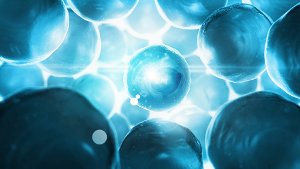- Other Products
- CCP
Biosimilars have revolutionized the biopharmaceutical industry since they first appeared a little over a decade ago. They are medical products that are highly similar to an already approved reference product. In order for a biosimilar to be approved, the developer needs to demonstrate similarity to the reference product in key areas, such as pharmacokinetics, pharmacodynamics and evaluate efficacy, safety and immunogenicity in clinical studies.


Biosimilars have revolutionized the biopharmaceutical industry since they first appeared a little over a decade ago. They are medical products that are highly similar to an already approved reference product. In order for a biosimilar to be approved, the developer needs to demonstrate similarity to the reference product in key areas, such as pharmacokinetics, pharmacodynamics and evaluate efficacy, safety and immunogenicity in clinical studies.
One of the most important evaluations is that of biological function. These evaluations are typically done through assays that replicate the likely in vivo function. An essential step is to determine if the biosimilar has antibody-dependent cellular cytotoxicity (ADCC). ADCC assays can be divided into methods that measure the death of the target cell directly and methods where a signal pathway activates a reporter gene upon activation of the Fc receptor on the cell surface. In addition to choosing an appropriate method for measuring ADCC, it is also important to select target and effector cells. The most common approach is to use engineered cell lines that continuously overexpress the antigen. They are very powerful and sensitive tools for determining the potential for an antibody to elicit ADCC, but the results may not fully translate to the in vivo outcome, which makes the use of biologically relevant cells a recommended additional part of the evaluation.
In the case of Remsima, the first globally approved monoclonal antibody biosimilar, the EMA noted that it was similar to its reference drug in biological and physiochemical activity but had a higher degree of fucosylation which led to a reduction in ADCC in some tests. A range of follow-up tests to address this discrepancy found that the ADCC activity is likely to be limited in vivo.
It is clear that designing in vitro assays that mimics the intricate interactions of the immune system in vivo is complicated. Furthermore, there is an inherent conflict between creating an extremely sensitive assay capable of detecting the tiniest impact on ADCC activity and an assay that recreates the complex in vivo environment and can predict a clinical outcome. A single assay, such as a reporter gene assay, can not be used to fulfill both goals. Instead, the best strategy is, like in the Remsima case, to use a combination of techniques that together can be used to understand how the drug functions in relation to the clinical object.
The iLite ADCC product portfolio is based on a reporter gene system and offers a convenient and powerful way of measuring the efficacy of antibodies to elicit ADCC in vitro.
It possesses all the hallmarks of optimal bioassays - excellent linearity, large dynamic window, specificity, repeatability, precision and accuracy - and introduces unique engineered homologues Target (+) and (-) Cells for a more complete picture of the intracellular events.
Find out more about why the iLite® ADCC Bioassay system are greater than the sum of its parts.